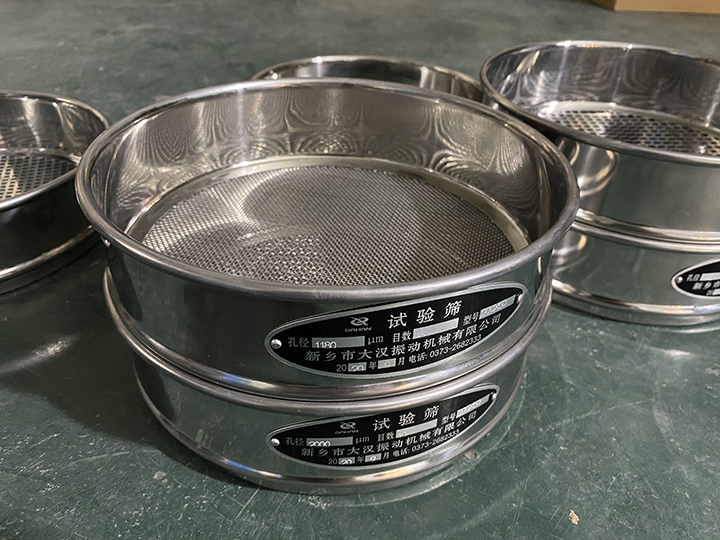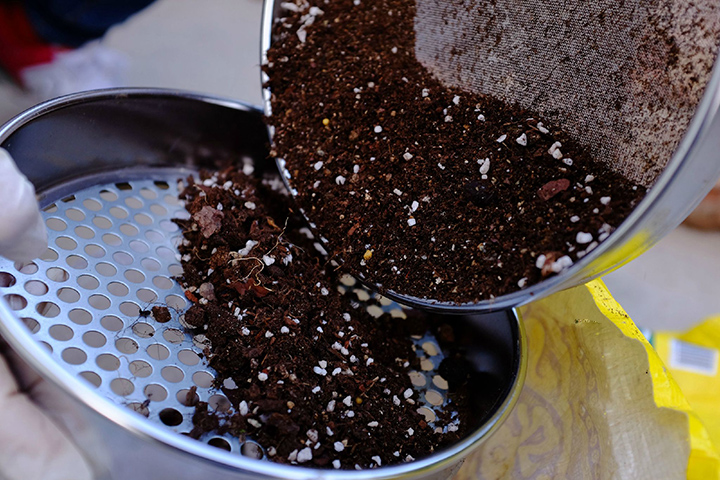Friday February-03 2023 10:58:26
In many cases, wet sieve test sieving, despite the inconveniences that come with it, has clear advantages over dry sieving. For example, the material to be tested may have been suspended in a liquid. Wet sieves in the form of slurries tend to be solids in size.

Wet solids, such as processed ore or chemical precipitation, often contain some very fine particles that make up the slime. These samples cannot be dried prior to sieving because the slime cake becomes hard lumps. The wet sieve test can provide an easy way to remove these fine particle sizes. The product can then be either wet sieved or dried and then dry sieved. Some fine particles cannot be easily sieved under dry conditions. For example, the sieve holes could easily become blind, or the particles could become charged with static electricity or "balls" when trying to sieve, or break off under the shaking action. For these difficult cases, many wet sieves can often help.
Water is a commonly used wet sieve in liquids. For substances that are naturally water repellent, such as coal and sulfide ores, the addition of a non-foaming wetting or dispersing agent may be necessary. It can be used for substances that are easily soluble in water, as well as other liquids (such as methylated alcohol, liquor, carbon tetrachloride, etc.). It is important to ensure that the liquid used in the wet sieving method does not interfere with other methods to achieve their dispersion of particles.
The wet sieve test using water is a simple method as follows. The sieve holds a bowl of weighed sample wash into the grid. Lower the sieve into the water and keep it level near the surface. A gentle jigging motion, then, until the fines no longer pass through the sieve. Sieve, then pour into another bowl, wash the oversized particles back and put them in. After allowing the particles to settle in the bowl, most of the water is decanted and the remainder is evaporated gently in a stream of air or in a drying cabinet at low temperature. This dried solid fraction is then weighed and, if necessary, dried after sieving.

Another method involves washing the test sample through a sieve or through a nest of molecular sieves, adding the liquid slowly, often and at a very low pressure, to avoid loss of material and damage to the sieving medium, but it is essential of. The operation can be carried out with the help of a suitably modified test sieve and the sieve is equipped with a specially designed cover and receiver.
The sieve and receiver of the test shaker are mounted on a flexible pipe connected to the reservoir outlet of the lead collector vessel. The weighed sample is carefully mixed with a portion of the sieve liquid and then transferred to the surface of the top sieve. A tightly fitted special cap, containing the dispersion nozzle, the sieve nest, and connected by a flexible tube to the liquid supply container, is located above the height of the nozzle above 50 cm. The liquid is then transported to the sieve nest and tested, the shaker is activated. The liquid feed rate should be sufficient to adequately cover the screening area, but not excessive, in which case it should not exceed the liquid outflow flow rate.
When the flow of liquid to the collection vessel is clear, the sieving process may be considered complete. Stop the vibrating screen during the test and remove the screen nest for sieve leakage. Each sieve shall be given the retained particles before and after filtration washing and rinse the sieved liquid with clean water. Then, the dried particles can be measured. Particles with the liquid outlet of the collector vessel may be recovered by filtration, if necessary, dried, and also weighed.
In the international standard classification, Wet Sieve Test involves textile products, chemical products, construction materials, soil quality, soil science, agricultural machinery...
Feb 03, 2023
Application of wet sieve test screening material
In many cases, wet sieve test sieving, despite the inconveniences that come with it, has clear advant...
Feb 03, 2023
Sieve Testing(Analysis)Equipment Price
The price of Sieve Testing Equipment is $150-$2000 Sieve Testing Equipment is mainly used in various ...
Feb 03, 2023
Types of Sieve Testing Equipment
Sieve Testing Equipment is divided into four types: conventional models (200mm, 300mm, 400mm, etc.), ...
Feb 03, 2023
What is the use of sieve shaker in laboratory
Laboratory Sieve Shaker Machine is an instrument used for material particle classification, particle ...
![]()
Then we look forward to hearing from you
Contact Us
Industrials
Yanjin county forest park gate to the west 1000 meters north road sitemap
